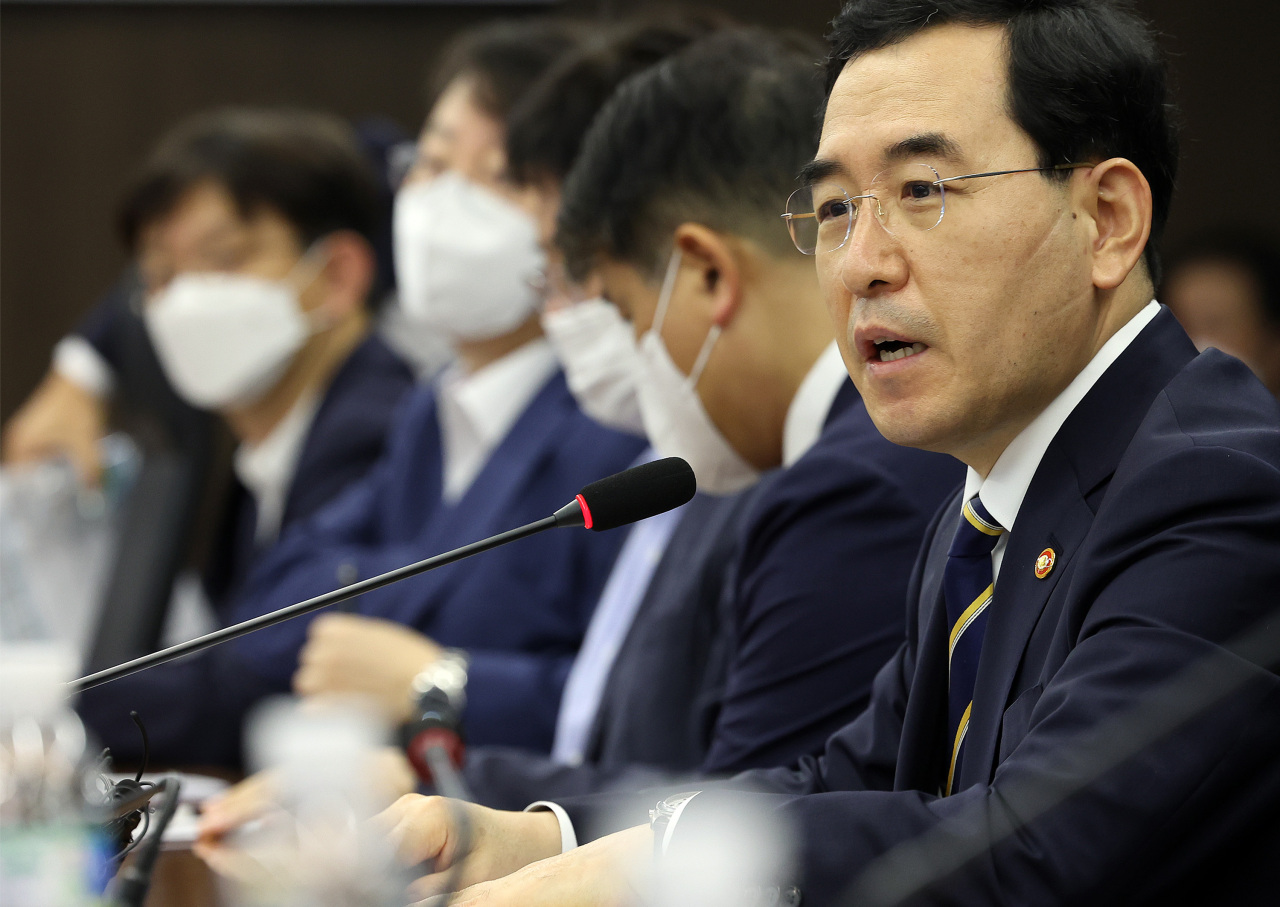CORPUS DELICTI***
Taliban say they've not found
body of al Qaeda leader

KABUL (Reuters) - The Taliban have not found the body of Ayman al-Zawahiri and are continuing investigations, group spokesperson Zabihullah Mujahid said on Thursday, after the United States said they killed the al Qaeda leader in an airstrike in Kabul last month.
The United States killed Zawahiri with a missile fired from a drone while he stood on a balcony at his hideout in July, U.S. officials said, in the biggest blow to al Qaeda since U.S. Navy SEALS shot dead Osama bin Laden more than a decade ago.
The Many Lives of Ayman al-Zawahiri
AUGUST 25, 2022

Ayman al-Zawahiri is dead – or so we are told. Al-Qaida’s chief and successor to the slain Osama bin Laden, he was deemed the chief ideologue and mastermind behind the audacious September 11, 2001 attacks on the United States. On July 31, he was supposedly killed in a drone strike in Afghanistan’s capital, Kabul, while standing on his balcony.
Terrorism and security pundits, whose views are best considered from afar with stern scrutiny, are predictably speculating that the killing will have some effect on al-Qaida but are incapable of showing how. Vanda Felbab-Brown at Brookings is convinced that “his death with have a negative strategic and demoralizing impact on al-Qaida” though gives no inkling of how this might be so. Even by her own admission, Zawahiri was not “involved in daily tactical al-Qaida planning”.
The lack of US counter-terrorism capabilities, not to mention officially stationed personnel in Afghanistan, is no problem for Felbab-Brown. She admires the US forces for still getting the job done, if it can be put as crudely as that. This killing was an “impressive show of the effectiveness and persistence of US counterterrorism efforts”. Scorn is also reserved for the Taliban, who seemed to be playing host and continuing old habits of supping from the same bowl.
President Joe Biden also took pride in noting that such killings could be executed at a distance, and without the need for an ongoing US garrison. “When I ended our military mission in Afghanistan almost a year ago, I made the decision that after 20 years of war, the United States no longer needed thousands of boots on the ground in Afghanistan to protect America from terrorists who seek to do us harm.”
In November 2020, another commentator from the Brookings stable, Daniel Byman, wrote something almost identical in flavour to that of Felbab-Brown. Zawahiri had, on that occasion, had another one of his death flourishes, reportedlyexpiring in Afghanistan from “natural causes”.
Byman was keen to speculate. “If Zawahri is dead, where will al-Qaida go next and what kind of movement will Zawahri’s successor inherit?” With classroom authority, Byman opined that, “Leaders matter tremendously for terrorist groups, especially jihadi ones, which often rise and fall based on the fortunes of their emir.”
As things transpired, the leader in question was very much alive and kicking and reports of his death had been embarrassingly exaggerated. He appeared in a video message celebrating the withdrawal of US forces from Afghanistan, released on September 11, 2021.
The al-Qaida leader certainly has form. In August 2008, Zawahiri’s fate was of such interest to CBS News as to prompt a bold pronouncement. He was said to be in “severe pain” and in need of urgent treatment for injuries sustained in a strike. Lara Logan, the CBS News chief foreign affairs correspondent, had supposedly secured a letter written by local Taliban leader Baitullah Mehsud making that point. The injuries were said to be so critical that the leader was “possibly dead”. Logan acknowledged that there had been “false death rumours” floating around previously about the al-Qaida figure, but no denials had been issued from Pakistan, the US or al-Qaida websites. Not exactly formidably deductive.
Zawahiri has encountered death yet again, this time at the end of a drone strike on a safe house in Kabul. But things were far from clear. Former head of the National Directorate of Security in Afghanistan, Rahmatullah Nabil, claimed it was “an American strike on IS-K” (Islamic State-Khorasan Province) that took place on July 31. Not so, according to Amrullah Saleh, former Afghan vice-president, who attributed responsibility to the Pakistani Airforce.
The Taliban followed up, with spokesman Zabihullah Mujahid confirming that the strike had, in fact, been the work of a US drone. “Such actions are a repetition of the failed experiences of the past 20 years and are against the interests of the US, Afghanistan and the region,” Mujahid added.
US President Joe Biden duly issued his video-briefing corroborating the attack. Not that this necessarily clarified matters regarding Zawahiri. John Kirby, National Security Council coordinator for strategic communications, admittedthat no DNA evidence had been obtained. Cockily, he asserted that, “based on multiple sources and methods that we’ve gathered information from, we don’t need it.”
The pattern of killings and assassinations gloried in, only to be revised or disproved later, is very much part of the counterterrorist manual. US officials have indulged in this before, notably in the context of Osama bin Laden. At a certain point in time, it became irrelevant whether he lived or otherwise. The figure had died on so many occasions as to become a simulacrum, existing in an absurdist drama known as terrorism studies and “counter-terrorist operations”. At best, the obsession with capturing and killing him provided the personal touch, an individual whose targeting gave reassurance that wrongs could somehow be righted by disposing of him in extrajudicial fashion.
Bin Laden’s slaying by the Navy Seals in May 2011 had a cinematic element and, in a rather fitting way, reconciled his dead-yet-not-dead existence to celluloid. The White House Situation Room showed President Barack Obama and his officials glued to the screen as the events in Abbottabad, Pakistan unfolded. Ghoulish reality television unfolded before an audience grimly transfixed, horrified and entertained.
Like his predecessor felled by US bullets, Zawahiri’s demise hardly changes the dynamic of the terrorist franchise he led. Killing such a man is not quite the equivalent of doing away with the manager of a banking branch, but the principle has a similarity to it. Such entities will continue to thrive, fed by the very forces that often claim to suppress them. Adherents will always be found; the hangman will never be disappointed.
The Assassination of Ayman al-Zawahri
AUGUST 24, 2022
While U.S. officials and their acolytes in the mainstream press have described the U.S. national-security establishment’s recent assassination of Ayman al-Zawahri as a great victory for President Biden and the U.S. “global war on terror,” it is important to keep in mind that the assassination was just plain murder on the part of America’s federal killing machine.
Federal officials and their mainstream press have justified al-Zawahri’s killing on two grounds: (1) by claiming that al-Zawahri participated in the 9/11 attacks and (2) by claiming that the killing was simply part of their “global war on terror.”
Both justifications, however, are nothing more than rationalizations for a state-sponsored murder on the part of the U.S. national-security establishment.
Let’s keep in mind something important: terrorism is not an act of war. It is a federal criminal offense. That includes the 9/11 attacks. As acts of terrorism, the 9/11 attacks were federal criminal offenses.
Consider all the federal prosecutions for terrorism that have taken place in U.S. district courts in New York, Virginia, Washington, D.C., and elsewhere for many years. There is a simple reason for those prosecutions: Terrorism is a federal criminal offense. If it were an act of war, there never would have been those criminal prosecutions. Instead, there would have simply been prisoner-of-war camps, like in regular wars. In regular wars, no soldier is criminally prosecuted for murder for killing an enemy soldier. That’s because in war, soldiers are legally entitled to kill the enemy.
In 1993, terrorists set off a bomb in the World Trade Center. The bombing didn’t bring down the towers but it did kill and injure multitudes of people. It was no different in principle from the later attacks on 9/11. When Ramzi Yousef, one of the people who committed the 1993 attack, was later taken into custody, he was not placed in a prisoner-of war-camp. Instead, he was prosecuted in federal district court. Again, that’s because terrorism is a federal criminal offense, not an act of war.
Because the magnitude of the death and damage was so much greater with the 9/11 attacks, the Pentagon and the CIA succeeded in perverting and warping America’s founding judicial system. After those attacks, they established a torture and prison camp in Cuba. Why Cuba? Their aim was to establish a Constitution-free zone where they could bring any suspected terrorist in the world and do whatever they wanted to him, without any judicial interference whatsoever. That included such things as torture, indefinite detention, and extra-judicial execution.
The Supreme Court declared that it had jurisdiction over the Cuba center but then, in an act of extreme passivity, permitted the Pentagon and the CIA to establish a dual judicial system, one that would operate alongside the federal judicial system. The Pentagon and the CIA would have the omnipotent authority to decide whether to send terrorism suspects through the federal system or through their kangaroo military-tribunal system.
The Gitmo system has always been flagrantly unconstitutional. But the federal judiciary has always been deferential to the Pentagon and the CIA. That’s why there are still prisoners at Gitmo who have been incarcerated and tortured for decades without even the semblance of a trial, in flagrant violation of the right to a speedy trial guaranteed by the Bill of Rights and the right not to be subjected to cruel and unusual punishments.
After the 9/11 attacks, the national-security establishment also claimed that it had the authority to assassinate anyone it considered to be a terrorist. As I document in my new book An Encounter with Evil: The Abraham Zapruder Story, this power of assassination came into existence long before the 9/11 attacks, but by and large, it was kept under wraps and not publicized widely by the CIA and the Pentagon.
Not so after 9/11, however. At that point, assassination became a well-established, widely publicized power of the CIA and the Pentagon. From that point on, they didn’t have to bring suspected terrorists to justice, either in the federal court system or the tribunal system at Gitmo. They could just kill suspected terrorists on sight. That included American citizens.
There was always one great big legal problem, however, with their program of state-sponsored assassination: The Constitution, which not only does not delegate a power of assassination to federal officials but also, through the Fifth Amendment, expressly prohibits the federal taking of life without due process of law — i.e., without formal notice and a trial.
The Constitution, however, proved to be no obstacle to state-sponsored assassinations simply because the Supreme Court and the federal judiciary played their standard deferential and passive role by upholding this omnipotent, totalitarian, dark-side power.
It is worth mentioning that there is no indication that al-Zawahri was participating in any anti-American terrorist operation at the time of his assassination. His killing appears to be nothing more than but an extrajudicial act of deadly vengeance in retaliation for the 9/11 attacks more than 20 years ago. It’s also worth mentioning that al-Zawahri was never convicted of participating in the 9/11 attacks. Indeed, as U.S. officials have slowly and reluctantly released their highly secret stash of evidence regarding 9/11 over the years, the great weight and preponderance of that evidence seems to point to the murderous regime of Saudi Arabia as the orchestrator of the 9/11 attacks. Of course, the Pentagon and the CIA would have every incentive to protect the murderous Saudi regime given that it provides much of the oil that funds their massive worldwide military machine.
Our American ancestors brought into existence the greatest judicial system in history. It was a system that admittedly permitted some guilty people to go free, but with the aim of ensuring that innocent people were never punished, killed, tortured, or abused. That system worked well for some 150 years. Unfortunately, the Pentagon and the CIA have destroyed it, as we have most recently seen with their extrajudicial murder of accused terrorist Ayman al-Zawahri.
This first appeared on Jacob Hornberger’s Explore Freedom blog.




